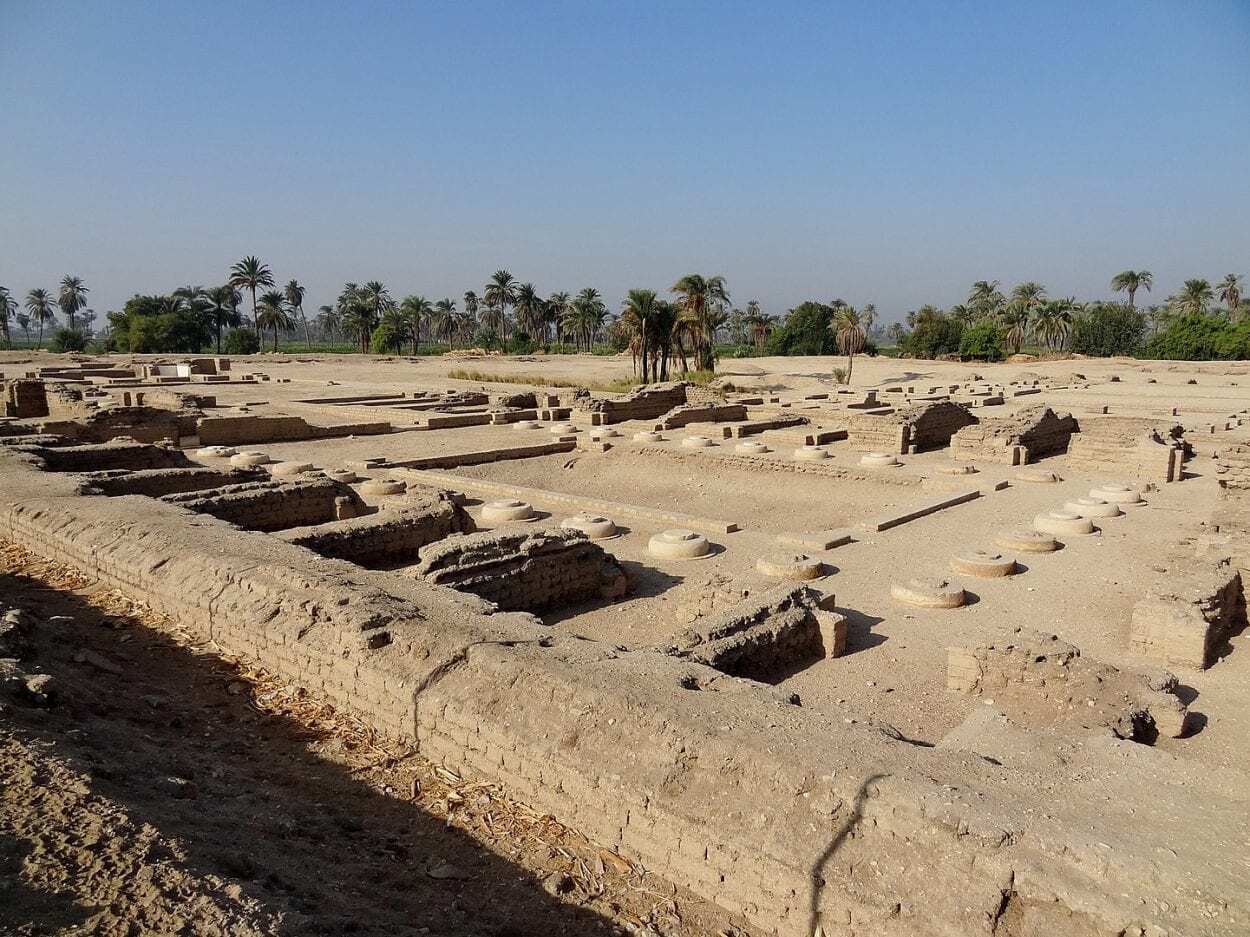Amarna, also called Akhetaten is an archaeological site and an Ancient Egyptian city, located on the eastern banks of the River Nile, in the present-day Minya governorate of Egypt.
Amarna was constructed in 1346 BC to serve as the capital city of the Pharaoh Akhenaten, the 10th ruler of the late Eighteenth Dynasty. Akhenaten (originally named Amenhotep IV) abandoned the traditional polytheistic religions of Egypt, instead introducing the worship of Atenism, which was centred on the cult god Aten and depicted as the disc of the sun.
During his early reign, Akhenaten followed the established pharaonic traditions of worship but quickly started to raise the profile of Atenism as the state religion, with the construction of temples and shrines to the Aten in cities across Egypt.
Following his death, his successors returned to the traditional deities and distanced themselves from Atenism. Akhenaten was discredited, being referred to in contemporary accounts as “the enemy” or “that criminal”, and historians often citing him as the “heretic king”.

Amarna was founded around year 5 of Akhenaten’s rule to serve as the royal capital, being described as the Aten’s “seat of the First Occasion, which he had made for himself that he might rest in it”. Unlike most Egyptian cities, Amarna was mainly built using mudbrick, with the public buildings and temples being faced with stone.
Amarna was laid out along a “Royal Road” referred to today as “Sikhet es-Sultan”, with the North Riverside Palace, the Northern Palace, and large private houses being located in the north of the city.

In the centre was the administrative and religious buildings, that includes the Great Temple of the Aten, the Small Aten Temple, the Great Royal Palace, and the “Bureau of Correspondence of Pharaoh”, where the Amarna Letters (an archive of mainly Akkadian cuneiform written on clay tablets consisting of diplomatic correspondence) would later be discovered by archaeologists.
To the south were the estates of the city’s nobles and dignitaries, most noted for being where a ruined house and studio complex was discovered in 1912 that contained the famous bust of Nefertiti created by Thutmose, the official court sculptor.
During Tutankhamun’s rule, Amarna was occupied for a decade or so after Akhenaten’s death, but was completely abandoned and forgotten, until its rediscovery during the 18th and 19th century.
Header Image Credit : Joan lalucat i Adrià Turina – CC BY 3.0





